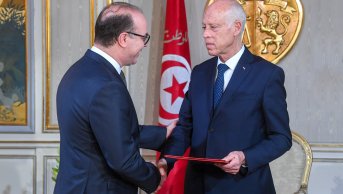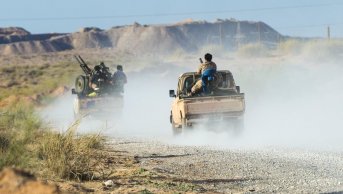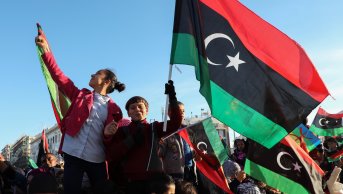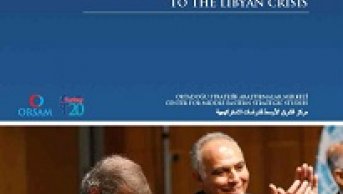Efforts to Regulate the Militia Forces in Libya: An Evaluation of the UN Agreement

UN has been paying great efforts to formulate an agreement to reconcile the parties with a Libyan negotiation process which was initiated in September 2014 in Ghadames. UN, already has presented four draft agreements until now, aims to end the Libyan civil war, which is becoming more and more of an international security threat according to UN, by reconciling the parties on a road map with peace talks. It is worth noting that all the draft up until now had three common topics: the National Accord Government, forming councils which led the inclusion of Libyan political agents to the process, and a national army which can end the fragmentation of militia forces and security vacuum. Each topic of UN-led road map requires an in-depth analysis. Furthermore, the efforts to formulate a national army under UN-led draft agreement, together with the issues of eliminating or regulating militia forces, which has become one of the most vital issue in the country since 2011, deserves a separate and detailed evaluation as it directly effects the other subjects of the agreement.
Prior Failed Attempts
Muammar Gaddafi was afraid of any possible coup against his rule, and therefore took numerous precautions to weaken the Libyan army to eliminate such a possibility. Especially after 1990s, numerous tribes influential in the army were targeted, their members were ousted from the army and new legion troops consisting of paid foreigners were established in control of Gaddafi’s wingmen and sons instead of the national army. Therefore, Libyan national army was dispersed during the 2011 civil war, and the soldiers either participating in militia forces or forming militia-like regional troops. In parallel to the situation of army, militia forces, despite the fact that they are lack of a central military coordination, become the most important agent in the country with the impact of continuing armament trend during post-2011 era. These aforementioned militia forces have filled the security gap on one hand, ironically have became the biggest security threat in the country on the other hand. Since the beginning of the civil war, it is estimated that around 1700 militia forces had emerged in Libya. In the equation of power struggle between tribes, influential families and ideological group, militia forces have become great tools as well as game-changing agents.
Militia forces, the most important military troops of the civil war, was attempted to be integrated to the new system by the governments after October 2011, and two critical strategies were implemented in this regard: disarmament and conversion to military units under the control of a central army. The disarmament of the militia was a project of the National Transitional Council as well as the parliament and governments in charge after the elections in the country wherein the armament increasing uncontrollably. However, the militia forces procured a respectable amount of armament power during the civil war, with many of them in possession of heavy weaponry such as tanks. Besides their physical power, the militia forces also succeeded in administrative self-institutionalisation through establishing autonomous bodies. Small-scale armed groups also integrated to these administrative bodies after the civil war. The initiatives and projects to convince the fighters in militia forces for disarmament also became inadequate and hence these efforts failed consequently. Primarily, taking an active role during the civil war, the militia forces refused disarmament to protect their newly-acquired powers.
In response to these failures, the new governments attempted to put the groups under a central military command whenever disarmament was not an option. The efforts to unite the militia forces, which were autonomous and controlling certain territories, under a central military command also, were not successful. On one hand the central government was not powerful and superior enough to control the militia forces under a single command, on the other hand, the leading members of the militia forces had resisted strongly to these efforts. In consequence, the militia forces continue to be autonomous.
Therefore the new governments, changed its strategy and provided the militia forces with a juridical status, and attached them to the Ministry of Internal Affairs. Thereby, the militia forces were converted into armed forces of the country in addition the national army. The government legally recognised the autonomy of the militia, and in practice admitted being weak against the militia forces with this implementation.
The Libyan National Army in the UN Draft Agreement
There are 14 articles (Article 36-Article 49) under the “Security Arrangements” headline of the peace agreement that UN has announced on 8 September. With these 14 articles, UN formulated a road map for the reconstruction of the army and the police forces. First of all, the mission to reconstruct the army and the police organisation is given to the National Accord Government. The draft agreement regulates various interim security arrangements to be implemented during the reconstruction period. These interim security arrangements cover implementation of ceasefire, withdrawal of militia forces from the cities, towns, complexes and strategically important buildings, and implementation of disarmament. The National Accord Government is bound to create the necessary bodies to control and apply these targets by the 37th article, which regulates the interim arrangements. A “Committee for the Monitoring the Implementation of the Interim Security Arrangements”, which will supervise these bodies, will be established with the participation of local groups (Article 40); and will also be able to call for help from the UN if needed. Following the ceasefire to go in effect with the pacification agreement, the militia will withdraw from all cities and residential areas starting with the capital of Tripoli within 30 days (Article 42-43). 60 days into the ceasefire, all heavy and medium weapons will be collected by the UN (Article 44). Articles 45-48 include the declarations of will to rehabilitate and integrate the disarmed militia forces into the society. According to this, the National Accord Government will carry out the necessary implementations for integration and rehabilitation. Also, the ex-militias fulfilling the conditions will have the right to join the security institutions.
Firstly, the issues exhibited in 14 articles remain limited to just being declarations of will. Considering this aspect, during the post-2011 era, these wills had been declared endlessly, but the efforts became unsuccessful one after another. Between 2011 and 2014, many alternative strategies were carried out in Libya to solve the militia issue. Firstly, disarmament and rehabilitation was tried, and negotiations were carried on to ensure the withdrawal of the militias from the city centres. Afterwards, attempts to regulate the militia forces under a central command and then to integrate them to the existing system were carried on. From dispersing the militia forces to the taming them within the system, none of these tactics actually worked. As a result, the UN agreement draft now needs to go beyond from being a declaration of will, and reveal a road map, which show how it plans to solve what other practices have failed to solve.
For example, expecting a success on implementation of the ceasefire and withdrawal of the militia forces by gathering the rival groups and local actors under “the Committee for the Monitoring the Implementation of the Interim Security Arrangement” is quite optimistic. Gathering the rival groups doesn’t guarantee a resolution to the problem or implementation of the UN-led road map. Of course, efforts for collective works by the clashing actors under organizational structure do provide a strong basis, but this could only be taken as a starting point. If the UN wants to accomplish the implementation of the road map in a short time indicated in the text, the parties need to pinpoint the details and work out the creases to the point of agreement.
Also, the UN draft agreement has no encouraging programs for the disarmament of the militia forces. The biggest hurdle faced about the militia forces in the post-2011 era was to convince the armed Libyans into disarmament. As there is no military structure to force the militias into disarmament or to assimilate the militia forces in, the initiatives to disarm the forces were unsuccessful. At this point, it is worth noting that personal security concerns are the primary motive pushing Libyans into forming armed groups. Concordantly, we need to emphasize that the tribes are not clashing only for power, but also for survival. The Libyan demographics are also quite hectic in the post-2011 era. For example, the reason for the clash between Tuaregs and Toubous in Fezzan lie in Tuaregs’ wanting to descend to Toubou territory as much as the Tripoli-Tobruk struggle. Similarly, expansion of militia forces of Misrata and Zintan to Fezzan and becoming a side within the conflicts further deepened the concern of survival.
Finally, the withdrawal of militias from residential areas, cities and strategically important buildings pose some problems encountered in other areas. It is a fact that militia forces exist in port towns and strategically important points such as populated city centres, airports, oil refineries and infrastructural facilities. Since 2014, there have been bloody clashes in these places. While the civil airport under the control of Zintan tribe was bombed by the forces under the control of Tripoli-based General National Congress (GNC), many points in Tripoli have been bombed by forces under the control of Tobruk-based House of Representatives (HoR). Therefore, it is of critical importance that these cities are cleared of clashes. However it is not clear under the draft agreement that to whom the militia forces will hand down the control. The draft agreement impose that the withdrawal will take 30 days, while the disarmament will take 60; UN doesn’t specify a timetable or a core structure about the establishment of a national army. For example, if forces under the control of Tobruk are being considered to command the structure, how is it going to be possible to convince the militia forces in Tripoli? Also the expression of “withdrawal of the militias” makes an impression that all militias are external forces currently deployed in residential areas. However, the majority of the militia forces are locals, taking care of the local security. As long as no structure to fulfill the security problem is established, it seems impossible for the militias to withdraw.
The main tendency in the conflict resolution efforts led by UN since September 2014 is to lead the establishment of institutional structures that will reunite the parties. Economic, political or safety-related problems are not a part of the talks. UN aims to take a supportive role, leaving the process for the establishment of the structures that will reunite the parties and ensure coordination of Libyan actors. However, it seems unlikely that UN will reach its goals with the current draft agreement. It comes up as a responsibility of the UN and the international society to contribute positively to resolution of the Libyan crisis. Furthermore, currently struggling with the refugee crisis, the main solution for the Europe is not to sink the human trafficking ships, but to establish a permanent peace in Libya.
This article was published in Ortadoğu Analiz journal with the title of "Efforts to Regulate the Militia Forces in Libya: An Evaluation of the UN Agreement ”










